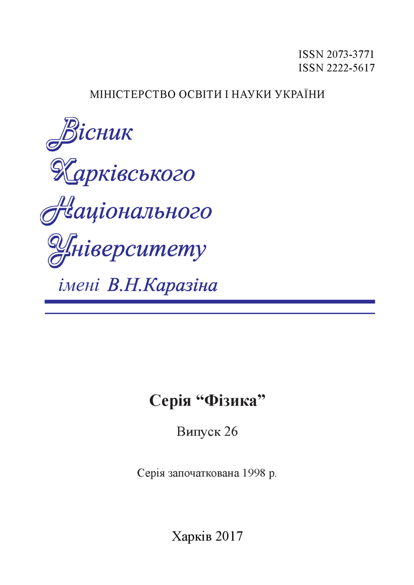On role of mass-transfer crowdion mechanism in local relaxation processes
Анотація
Приведено аналіз характеру релаксаційних процесів в кристалічних матеріалах навколо локальних концентраторів напружень різних типів (тріщина в міді при її заліковуванні одноосним стисненням; жорстке (корунд) чужорідне включення в монокристалі KCl; порожнина в монокристалі KCl, отримана в результаті імпульсного оптичного пробою монокристала випромінюванням рубінового лазера). Показано, що в перших двох випадках (тріщина, жорстке включення) провідним механізмом масопереносу, що приводить до зняття до 50% напружень, є дислокаційно-дифузійний механізм. Згідно цьому механізму, на перетинах гвинтових дислокацій з’являються надлишкові вакансії і міжвузельні атоми, завдяки чому включається швидкий краудіонний (міжвузельний) масоперенос, завершуючи релаксаційний процес. У разі лазерного пробою ведучим є механізм краудіонного масопереносу. Дифузійно-дислокаційний механізм підключається на завершальній стадії процесу, забезпечуючи порядка 5% повної величини необхідного масопереносу.
Завантаження
Посилання
I.М. Neklyudov, V.N. Voyevodin, I.N. Laptev, А.А. Parkhomenko. Problems of Atomic Science and Technology, 2 (90), 21 (2014).
R.А. Andrievski. Phys. Usp., 57, 945 (2014).
M.A.Volosyuk, A.V. Volosyuk, N.Ya. Rokhmanov. Functional Materials, 22, 51 (2015).
J.Hirth, J.Lothe. Theory of dislocations, McGraw-Hill, New York (1968), 600 p.
V.D. Natsik, Е.I. Nazarenko, Low Temperature Physics, 26, 283 (2000).
V.G. Kononenko. Metallofizika, 7, 71 (1985) [in Russian].
V.G. Kononenko, V.V. Bogdanov, A.N. Turenko, М.А. Volosyuk, А.V. Volosyuk. Problems of Atomic Science and Technology, 4 (104), 15 (2016).
Yu.I. Boyko, M.A. Volosyuk. Bulletin of Kharkov National University named by V.N. Karazin, ser. «Fizyka», 1020, 42 (2012) [in Russian].
V.G. Kononenko, M.A. Volosyuk, А.V. Volosyuk. Problems of Atomic Science and Technology, 5 (99), 15 (2015).
A.M. Kosevich, А.S. Kovalev. Solid State Comm., 12, 763 (1973).
А.V. Gorbunov, М.Yu. Maksimuk. Phys. solid state, 36 (5), 1416 (1994).








3.gif)
